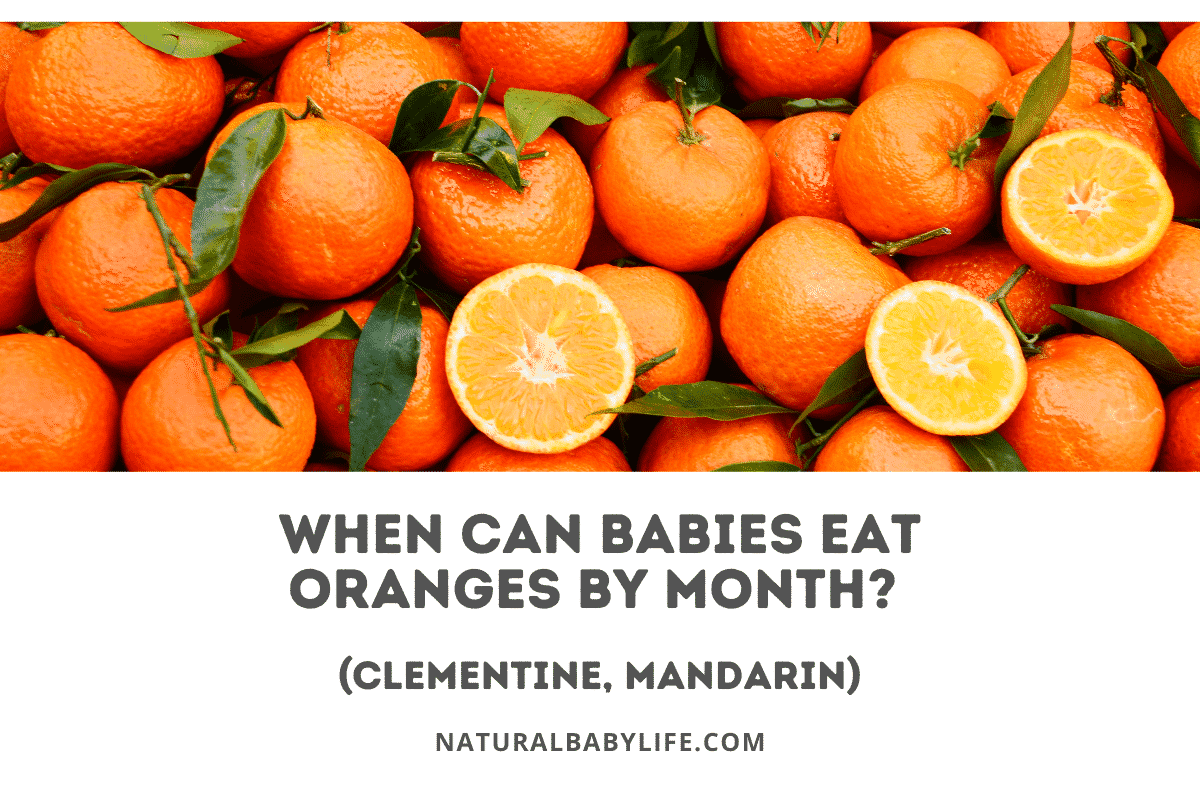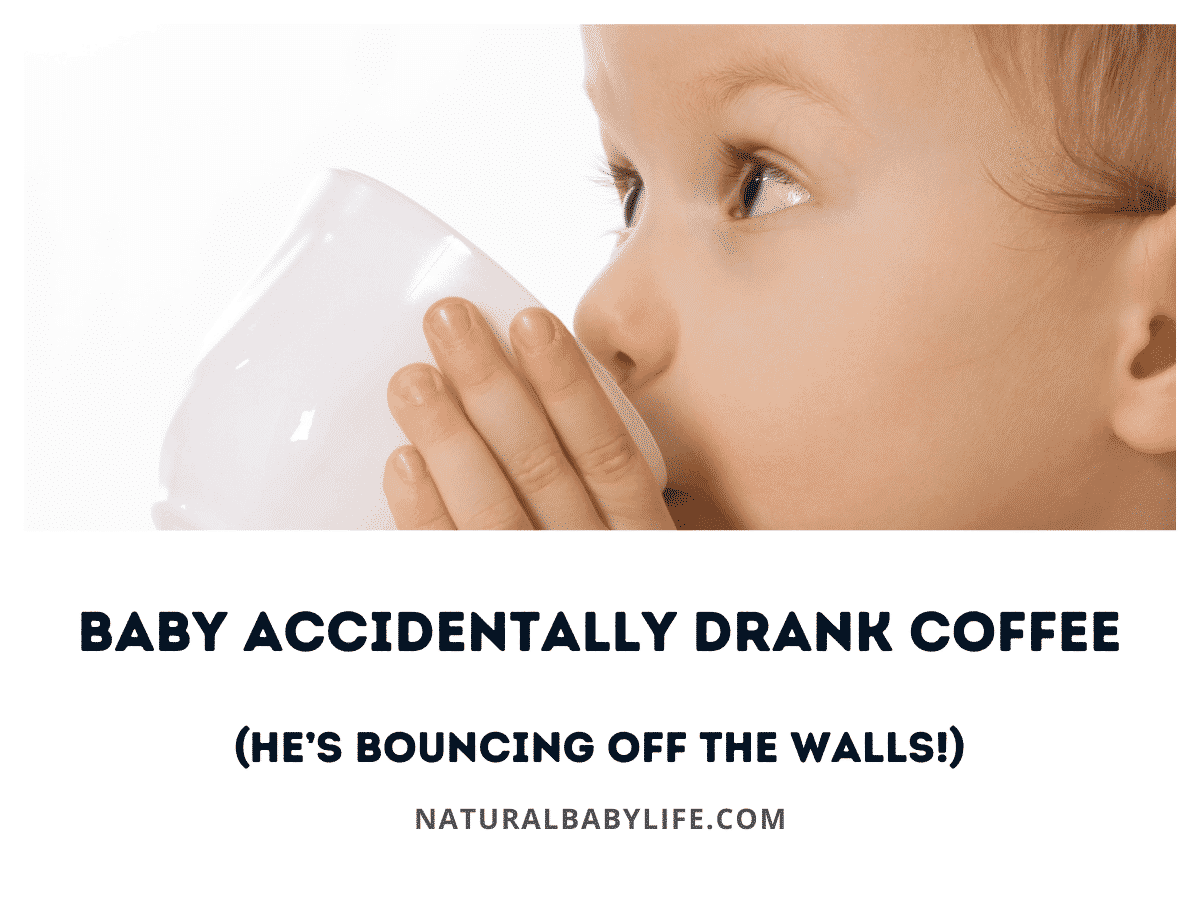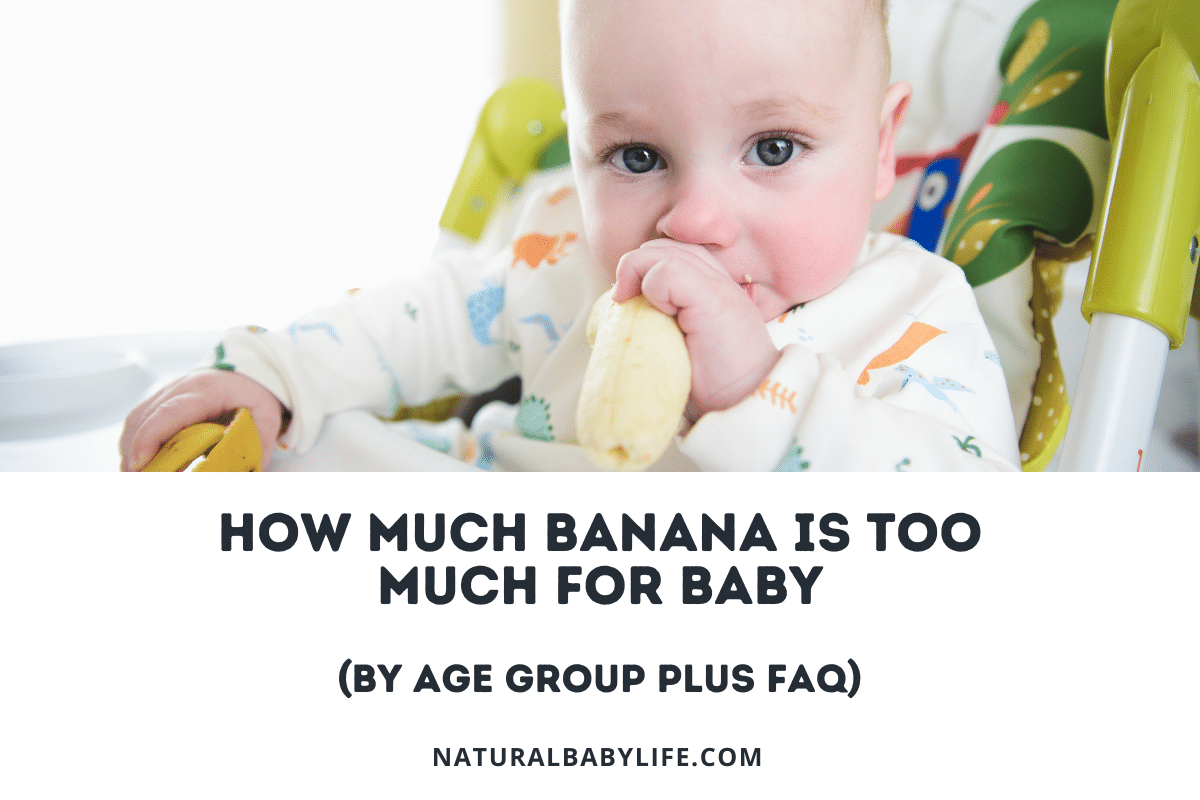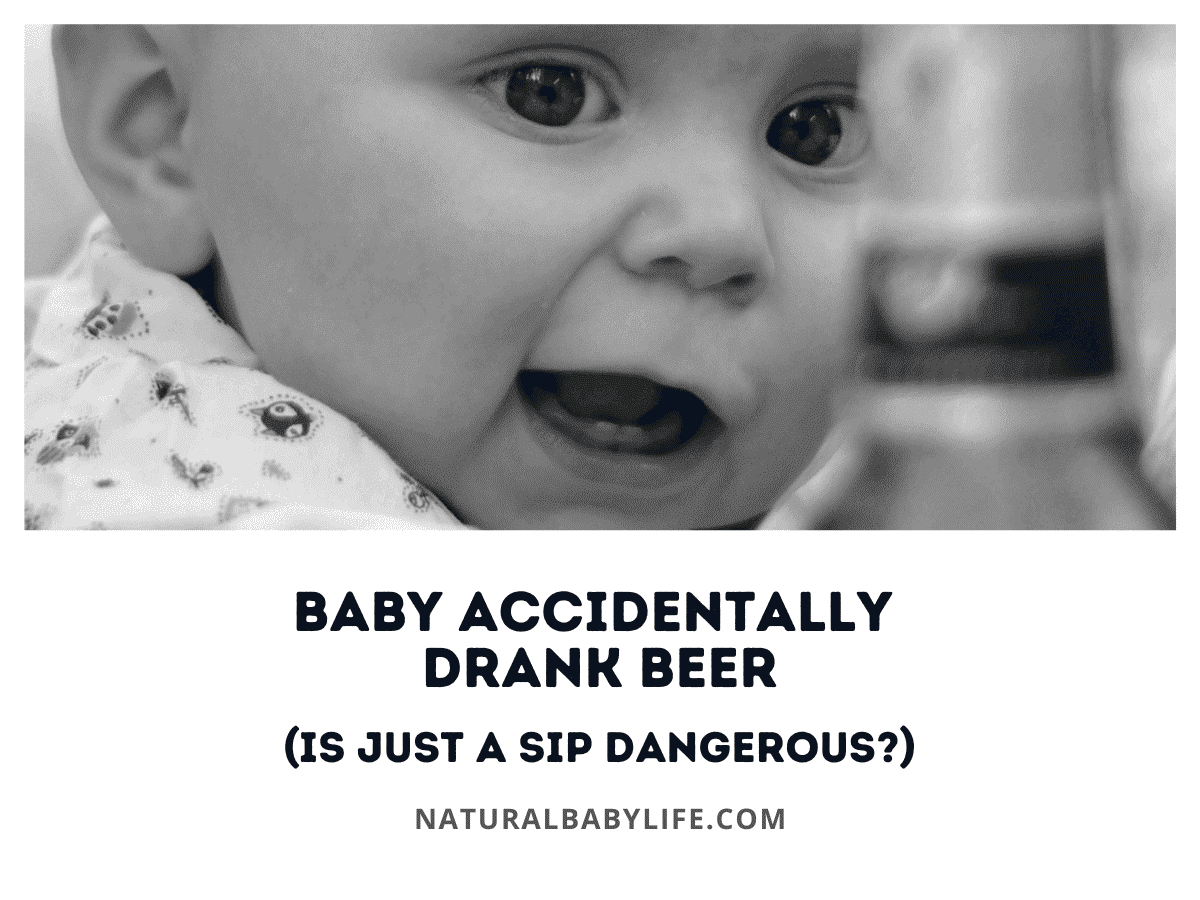Introducing new food, such as oranges, to your baby for the first time can be a stressful yet somewhat exciting adventure for parents. You might be wondering when you can give your baby oranges and even how to feed them to her.
Babies can start eating oranges at around 8 months but many suggest waiting until after one year because oranges are pulpy and stringy food that can be difficult for babies to eat safely. The acidity in oranges can also cause digestive issues and diaper rashes. Once a baby’s digestive system has matured, oranges are a fantastic source of vitamin C!
My own children love eating oranges with breakfast and as a daily snack. Of course, oranges are a wonderful source of natural vitamins that any parent can feel confident feeding to their children. Read on to explore the best ways to introduce oranges to your baby and learn about safe feeding habits by age. Watching your little one’s adorable facial expressions as they explore their palate will become a priceless memory as your child ages.
Table of Contents
When can babies have oranges for the first time?
It is a generally accepted notion that babies can begin to experiment with solid foods between 4 and 6 months of age.
But is this true of all solid foods?
While citrus fruits like oranges are healthy food for babies to eat in moderation, they present some unique challenges that make them more difficult for babies to eat when they are just starting out. The main concerns when feeding oranges to young babies are the presence of seeds within the slice, the acidic nature of the fruit, and the thick membrane surrounding the juicy insides of the orange.
It’s easy to see how seeded fruits with a tough membrane could be a choking hazard, but the acidity of oranges presents another unique challenge for parents wanting to allow their children to try oranges. Small rashes around the mouth or in the diaper area are a common side-effect of trying any acidic fruit for the first time, but these side effects are generally harmless and are typically not a huge red flag. Parents can combat the side effects of orange acidity by simply feeding their child very small amounts of the fruit, to begin with, and only moving to larger amounts after initial exposure.
Another potential issue with feeding oranges to babies is the thick membrane surrounding the orange. It is recommended that orange slices be cut so that babies can more easily chew the membrane around the orange. In addition, the membrane (as most of us know) is not the most appealing taste. We want babies to enjoy the food they are exposed to, so cutting the orange gives babies the opportunity to immediately taste the good stuff without having to get through the membrane first.
My own children love eating oranges with breakfast and as a daily snack. Of course, oranges are a wonderful source of natural vitamins that any parent can feel confident feeding to their children. Read on to explore the best ways to introduce oranges to your baby and learn about safe feeding habits by age.
4 months
At 4 months, your baby might be experimenting with some soft solids but oranges shouldn’t be one of baby’s first foods.
5 months
At 5 months, your baby might be starting to experiment with some soft solids but you shouldn’t be feeding your baby oranges at this point.
6 months
At 6 months, your baby has likely started eating more solid foods and while it isn’t recommended for you to feed your baby orange pieces at this point, you could allow your baby to have pureed foods that include oranges and monitor for any irritation.
7 months
At 7 months, your baby has likely started eating more solid foods and while it isn’t recommended for you to feed your baby orange pieces at this point, you could allow your baby to have pureed foods that include oranges and monitor for any irritation.
8 months
At 8 months you can start giving your baby prepared orange pieces that have the membrane and seeds removed. Be sure to cut the pieces very small and monitor your baby for any signs of digestive upset or irritation.
What’s the best kind of orange to feed your baby?
Fortunately, there are many ways to overcome the challenges babies face when eating oranges and create a safe opportunity for your child to eat them for the first time.
The best kind of orange to feed your baby for the first time is a Clementine, Halo, or Cutie orange (a type of mandarin orange) because they are seedless, have a thinner membrane than other varieties, and are small enough to work well for a baby’s portion size.
Always be sure to keep a close eye on your baby anytime she is eating a new food for the first time in case there is any type of allergic reaction or choking. I’ve already mentioned that it is relatively common to see a little redness around the mouth from the citrus juice, but other issues are not normal.
When can babies have mandarin oranges or clementines?
As I mentioned before, mandarin oranges are the recommended orange variety to serve to your baby because of their thinner membranes.
Babies can try small amounts of mandarin oranges as soon as they start eating solid foods but it is generally recommended that they wait a little longer, around 9-12 months, before eating oranges regularly.
Keep in mind that all babies will react differently to oranges – some might become irritated by the acidic juice and others might have no issues at all. I always recommend letting your baby have small tastes with a variety of new foods spaced out such that parents can monitor and observe any issues and be able to trace it back to the correct food culprit.
When can you give a baby orange juice?
Juices are generally frowned upon for babies who are younger than 6 months old, and even then they may not be a good idea to feed to children. Young babies still get most of their nutrition from breast milk or formula. When parents begin to introduce solids, the baby is mostly exploring taste, texture, and practicing chewing.
Filling up on juices, which are high in sugar and generally no hold less nutritional value than whole fruit, prohibits your baby from craving their main source of nutrition. In other words, if a baby drinks fruit juice then he/she is less likely to nurse or take their bottle.
All of this considered, it is safe to give your baby orange juice at 12 months old, but it is not considered a best practice, and exposure to juices at early age should be limited.
The nutritional breakdown of oranges
The most obvious health-related benefit of oranges is their high content of vitamin C. Vitamin C is known for the health benefit of strengthening immune systems, a constant battle of parents with kids in daycare or school.
Additionally, the high concentration of fiber in the orange is extremely beneficial for a young child’s digestive tract. Young babies often lack the fiber needed to maintain healthy stool and a good mix of oranges within their diet can help regulate their bowel movements.
The orange is a great source of both calcium and phosphate. Both of these are necessary for the development of strong, healthy bones in young children. Introducing oranges to your children will foster the development of healthy bones!
Here is a breakdown of nutritional value for one medium orange:
- Calories: 69
- Total fat: .2 grams (0g saturated, 0g polyunsaturated, 0g monounsaturated)
- Total Carbohydrates: 18 grams (3.1 grams fiber, 12 grams sugar)
- Protein: 1.3 grams
- Sodium: 1.4 mg
- Cholesterol: 0 mg
- Potassium: 232 mg
- Vitamin A: 6.9% of the daily value (DV)
- Vitamin C: 138% of DV
- Calcium: 4.6% of DV
- Iron: 1% of DV
Source: Nutritionix
How to feed orange to baby
Feeding an orange to your baby can be as simple or as complicated as you feel comfortable making it. There is no need to cook oranges, which makes them an easy choice for a grab-and-go healthy snack.
I’ve mentioned that mandarin oranges (like Clementines) are also a good choice for the first orange eating experience. The membrane on a mandarin orange is not as thick as an average orange. Each slice is also smaller making a mandarin orange an appropriate size for feeding to young children.
How to cut orange for baby
For your baby’s first taste, follow these steps:
- Wash and peel the Clementine
- Pull apart the slices
- Remove any thick pieces of membrane, especially the center part of the orange
- Cut the oranges into tiny pieces
- Serve just a few pieces at a time
Baby-led weaning orange preparations
One of the best benefits of the orange, as far as the parent is concerned, is that they require little-to-no preparation before offering. Most parents will agree that cutting an orange slice in two before offering the food is good practice for two reasons. First, it reduces the choking hazard. Second, it allows the baby to more easily get past the membrane of the orange slice.
However, it is plausible to give your baby a whole orange slice without cutting it first. As long as the orange is seedless and the baby is supervised. For example, my daughter, when first introduced to oranges, would suck all of the juice out and then simply spit the membrane back onto her high chair. Oranges were (and still are) one of her favorite early foods.
How to feed oranges to your baby by age
All babies are different when it comes to tastes and preferences, but there are still some general recommendations that you should follow when it comes to feeding solid foods to your baby.
Oranges, of course, fall into the fruit category when it comes to dietary recommendations, but many parents might not understand exactly what the portion sizes are for fruit. I thought it would also be handy to have a helpful guide that shows you the best way to prepare oranges for your baby at each age so I put together this table!
To determine how much orange you could offer your baby by age I looked at the feeding guides for infants, toddlers, and young children at Florida’s Department of Health to see how many servings of fruit are recommended for each group.
Best way to serve orange to baby by age with serving sizes
| Baby or Toddler Age | Best way to prepare/serve oranges | A serving size of fruit (such as apples) per day |
|---|---|---|
| 6 months or younger | Not recommended | 4 to 8 tablespoons |
| 6 to 8 months old | Not recommended | 4 to 8 tablespoons |
| 8 to 12 months old | Seedless mandarin oranges (like Clementines) with the membrane cut off - Cut into tiny pieces Cupped or canned oranges can work well - cut them up first | 1/4 to 1/2 cup (about 1 small orange or less) |
| 12 to 16 months old | Seedless mandarin oranges (like Clementines) with the membrane cut off - Cut into tiny pieces Cupped or canned oranges can work well - cut if needed | 1/4 to 1/2 cup (about 1 small orange or less) |
| 16 to 24 months old | Seedless mandarin oranges cut into small pieces | 1/4 to 1/2 cup (about 1 small orange or less) |
| 2 to 5 years old | Seedless orange pieces (cut into smaller pieces if needed) | 1/2 cup (about one small orange) |
Can baby have too many oranges?
The simple answer to this question is yes. There is almost always the possibility of too much of a good thing!
One of the issues brought up earlier in this article is the acidity of an orange. For a young baby, exposure to acidic foods might cause a skin reaction. A reaction around the mouth, or in the diaper area is a common issue with super acidic foods. For this reason, oranges should be limited and reactions to the fruit monitored.
A great way to ensure a little more variety in your baby’s diet is to pick up some baby food pouches that mix other foods together with avocados. In our house, we absolutely love the Happy Baby Organics baby food pouches and they have a delicious set of mixes that you can find right here.
A reaction to orange is not necessarily a food allergy, though, and may not be cause for alarm at all. Watch your child for sneezing, wheezing, coughing, and rash and report any questionable reactions to a doctor.
Another potential issue with too much exposure to any fruit is an increased intake of sugar. Oranges are a fruit that is filled with vitamins and nutrients, but they also contain a lot of sugar. Creating a balanced diet for your little one, a diet with both natural sugar and protein is a good start.










